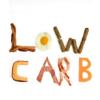CYBERMED LIFE - ORGANIC & NATURAL LIVING
CYBERMED LIFE - ORGANIC & NATURAL LIVING
 Low Carbohydrate - Ketogenic: Low-carbohydrate diets or low-carb diets are dietary programs that restrict carbohydrate consumption. Foods high in easily digestible carbohydrates (e.g., sugar, bread, pasta) are limited or replaced with foods containing a higher percentage of fats and moderate protein (e.g., meat, poultry, fish, shellfish, eggs, cheese, nuts, and seeds) and other foods low in carbohydrates (e.g., most salad vegetables such as spinach, kale, chard and collards), although other vegetables and fruits (especially berries) are often allowed. The amount of carbohydrate allowed varies with different low-carbohydrate diets.
Low Carbohydrate - Ketogenic: Low-carbohydrate diets or low-carb diets are dietary programs that restrict carbohydrate consumption. Foods high in easily digestible carbohydrates (e.g., sugar, bread, pasta) are limited or replaced with foods containing a higher percentage of fats and moderate protein (e.g., meat, poultry, fish, shellfish, eggs, cheese, nuts, and seeds) and other foods low in carbohydrates (e.g., most salad vegetables such as spinach, kale, chard and collards), although other vegetables and fruits (especially berries) are often allowed. The amount of carbohydrate allowed varies with different low-carbohydrate diets.
Such diets are sometimes 'ketogenic' (i.e., they restrict carbohydrate intake sufficiently to cause ketosis). The induction phase of the Atkins diet is ketogenic.
The term "low-carbohydrate diet" is generally applied to diets that restrict carbohydrates to less than 20% of caloric intake, but can also refer to diets that simply restrict or limit carbohydrates to less than recommended proportions (generally less than 45% of total energy coming from carbohydrates).
The ketogenic diet is a high-fat, adequate-protein, low-carbohydrate diet that in medicine is used primarily to treat difficult-to-control (refractory) epilepsy in children. The diet forces the body to burn fats rather than carbohydrates. Normally, the carbohydrates contained in food are converted into glucose, which is then transported around the body and is particularly important in fueling brain-function. However, if there is little carbohydrate in the diet, the liver converts fat into fatty acids and ketone bodies. The ketone bodies pass into the brain and replace glucose as an energy source. An elevated level of ketone bodies in the blood, a state known as ketosis, leads to a reduction in the frequency of epileptic seizures. Almost half of children, and young people, with epilepsy who have tried some form of this diet saw the number of seizures drop by at least half, and the effect persists even after discontinuing the diet. There is some evidence that adults with epilepsy may benefit from the diet, and that a less strict regimen, such as a modified Atkins diet, is similarly effective. The most common adverse effect is constipation, affecting about 30% of patients—this was due to fluid restriction, which was once a feature of the diet, but this led to increased risk of kidney stones, and is no longer considered beneficial.
The original therapeutic diet for paediatric epilepsy provides just enough protein for body growth and repair, and sufficient calories to maintain the correct weight for age and height. The classic therapeutic ketogenic diet was developed for treatment of paediatric epilepsy in the 1920s and was widely used into the next decade, but its popularity waned with the introduction of effective anticonvulsant medications. This classic ketogenic diet contains a 4:1 ratio by weight of fat to combined protein and carbohydrate. This is achieved by excluding high-carbohydrate foods such as starchy fruits and vegetables, bread, pasta, grains and sugar, while increasing the consumption of foods high in fat such as nuts, cream, and butter. Most dietary fat is made of molecules called long-chain triglycerides (LCTs). However, medium-chain triglycerides (MCTs)—made from fatty acids with shorter carbon chains than LCTs—are more ketogenic. A variant of the classic diet known as the MCT ketogenic diet uses a form of coconut oil, which is rich in MCTs, to provide around half the calories. As less overall fat is needed in this variant of the diet, a greater proportion of carbohydrate and protein can be consumed, allowing a greater variety of food choices.
In the mid-1990s, Hollywood producer Jim Abrahams, whose son's severe epilepsy was effectively controlled by the diet, created the Charlie Foundation to promote it. Publicity included an appearance on NBC's Dateline programme and ...First Do No Harm (1997), a made-for-television film starring Meryl Streep. The foundation sponsored a multicentre research study, the results of which—announced in 1996—marked the beginning of renewed scientific interest in the diet.
Clinical trials and studies in animal models (including C. elegans) suggest that ketogenic diets provide neuroprotective and disease-modifying benefits for a number of adult neurodegenerative disorders. As of 2012, there is limited clinical trial data in these areas, and, outside of paediatric epilepsy, use of the ketogenic diet remains at the research stage.